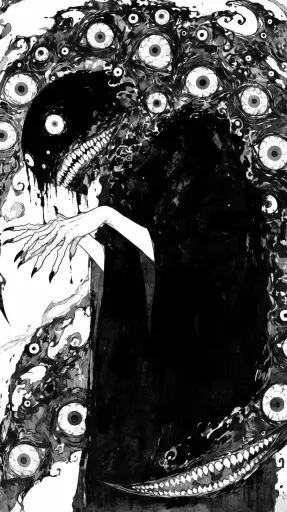Explore the Best AI Image Gallery

Beyond the Canvas: How AI-Powered Visual Experiences are Transforming Creativity
The realm of creativity is constantly evolving, and artificial intelligence (AI) is emerging as a powerful force, reshaping how we create, experience, and interact with art and design. AI-powered visual experiences are breaking down traditional barriers, blurring the lines between imagination and reality, and opening up unprecedented possibilities for artists, designers, and consumers alike.
The Dawn of a New Creative Era
AI algorithms are now capable of generating stunning visuals, from realistic images and animations to abstract art pieces. Tools like DALL-E 2 and Midjourney allow users to input text prompts and receive unique, AI-generated artwork. This democratization of creativity empowers individuals with limited technical skills to express themselves visually, fostering a more inclusive and diverse creative landscape.
Applications Across Industries
The impact of AI-driven visual experiences extends far beyond the realm of fine art. Various industries are leveraging these technologies to enhance their creative processes:
- Gaming: AI can generate immersive game environments, create realistic characters and animations, and personalize player experiences.
- Film and Television: AI can assist in visual effects creation, generate storyboards, and even write scripts, streamlining production workflows.
- Advertising and Marketing: AI-powered tools can create personalized ads, design engaging marketing materials, and analyze consumer preferences to optimize campaigns.
- Architecture and Design: AI can assist in generating innovative architectural designs, visualizing spaces, and creating realistic 3D models.
Ethical Considerations
As with any powerful technology, the rise of AI-driven visual experiences raises ethical concerns:
- Copyright and Ownership: Who owns the copyright to AI-generated art? How do we address issues of plagiarism and intellectual property?
- Bias and Representation: AI algorithms can perpetuate existing biases present in the data they are trained on, leading to unfair or discriminatory outcomes.
- Job Displacement: The automation potential of AI could lead to job losses in creative fields. It is crucial to consider the social impact and explore strategies for retraining and reskilling.
Future Trends
The future of AI-driven visual experiences is brimming with possibilities:
- Immersive Experiences: Expect advancements in virtual reality (VR) and augmented reality (AR) that leverage AI to create highly interactive and personalized experiences.
- Generative Design: AI will play an increasingly significant role in generative design, allowing for the creation of complex and innovative structures, products, and artistic expressions.
- Human-AI Collaboration: The future likely lies in a collaborative approach where humans and AI work together, leveraging each others strengths to achieve creative breakthroughs.
Conclusion
AI-powered visual experiences are revolutionizing the creative industry, unlocking new frontiers of imagination and expression. By embracing these advancements responsibly and addressing ethical considerations, we can harness the power of AI to create a more innovative, inclusive, and inspiring future for creativity.


](https://images.ai-img.art/thumbnails/150/51c93500396faff4e7fa8b42bc68033067b16b2230e3496e95c482a581ff0fe9.webp)



](https://images.ai-img.art/thumbnails/150/157712d76865d557120f9baf988de3d0525225295a2789c89bf2c4a5a96a03d1.webp)







![**Representation: A dog acting as a private tutor to a child. The dog holds a ruler in its paw and stands at the blackboard to explain a dog diagram to the child. Graphic style: Line drawing, cartoon style, influenced by Franco-Belgian comics, thick black lines, simplified design, vector, black and white only, in the style of Keith Haring or the French comic strip "Alinéa". [IMPORTANT]: A single continuous line extending from one side of the image to the other, minimalist, strong outlines, line drawing, without lifting the hand, ultra-simplified, no shading, entirely white image, drawing created in the center of a sheet of paper. --ar 16:5** - Variations (Strong) by <@627984126871470085> (fast)](https://images.ai-img.art/thumbnails/150/f4e034998ccd869d8a061fd12017514fcd92210eb33d4222dc9b54716223f4dd.webp)












](https://images.ai-img.art/thumbnails/150/9d51c5e673b4f2068b7b01abc35425a06f173b76303adf9ad29ca14302c25b18.webp)








![**Representation: A dog acting as a private tutor to a child. The dog holds a ruler in its paw and stands at the blackboard to explain a dog diagram to the child. Graphic style: Line drawing, cartoon style, influenced by Franco-Belgian comics, thick black lines, simplified design, vector, black and white only, in the style of Keith Haring or the French comic strip "Alinéa". [IMPORTANT]: A single continuous line extending from one side of the image to the other, minimalist, strong outlines, line drawing, without lifting the hand, ultra-simplified, no shading, entirely white image, drawing created in the center of a sheet of paper. --ar 16:5** - <@627984126871470085> (fast)](https://images.ai-img.art/thumbnails/150/7a854648a81e51241dcca8d24dd6e3bfcf07ad1df51baf401c9b729f4cf411fa.webp)




![**Representation: A teenager smiling while thinking about a friendly dog, a comic-style thought bubble with a friendly dog inside. Graphic style: Line drawing, cartoon style, influenced by Franco-Belgian comics, thick black lines, simplified design, vector, black and white only, in the style of Keith Haring or the French comic strip "Alinéa". [IMPORTANT]: A single continuous line extending from one side of the image to the other, minimalist, strong outlines, line drawing, without lifting the hand, ultra-simplified, no shading, entirely white image, drawing created in the center of a sheet of paper. --ar 16:5** - <@627984126871470085> (fast)](https://images.ai-img.art/thumbnails/150/6fc850f638e3dee0c4b121acecad2c8419e02bdeac7f871d625f1003c1c3abe1.webp)


